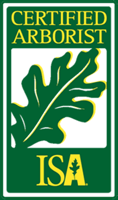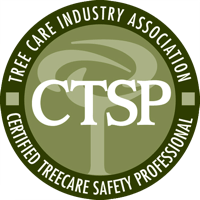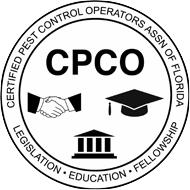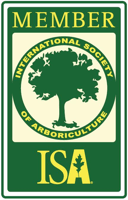South Florida is known for its lush, vibrant landscapes. Tropical trees, palms, and flowering ornamentals thrive here year-round, thanks to the warm climate and high humidity. But that same environment is also ideal for something far less welcome: pests.
During the summer, insect activity increases dramatically. Heat and moisture create the perfect breeding ground for a variety of destructive pests, many of which can do serious harm to trees if left untreated. For homeowners who take pride in their landscaping, this can mean declining health in once-healthy trees, sudden dieback in ornamentals, or entire sections of a yard that begin to look stressed or patchy.
Understanding the threat of summer tree pests in South Florida, recognizing early warning signs, and knowing when to bring in professional help are essential steps to maintaining a healthy, beautiful yard.
Why Summer Pests Are a Threat to Your Trees
Pests are a year-round concern in South Florida, but summer brings a sharp spike in activity. Insects reproduce more quickly in warm weather, and their populations can explode seemingly overnight. In many cases, by the time symptoms become visible, significant damage has already occurred beneath the surface.
Pests attack trees in several ways. Some, like whiteflies and aphids, pierce leaves and stems to extract sap, weakening the plant’s energy supply. Others, such as scale insects, disrupt the tree’s vascular system and can restrict nutrient flow. Mites, another major pest, scrape leaf surfaces to feed on plant cells, causing discoloration and leaf loss.
While one or two insects may not seem like a problem, they multiply rapidly in summer. A single infested tree can quickly become a breeding ground, spreading pests to adjacent trees and shrubs. Left unchecked, infestations can lead to:
- Canopy thinning and leaf loss
- Reduced flowering and fruit production
- Branch dieback and internal decay
- Complete tree failure in severe cases
In addition to plant damage, many pests also leave behind sticky residue that encourages mold growth and attracts ants, compounding the problem. That is why timely and professional tree pest control is so important during the summer months.
Common Tree Pests in South Florida
South Florida’s unique plant diversity supports a wide variety of insects, many of which can cause significant harm to your landscape. Here are some of the most common and aggressive pests that target trees in the region:
1. Whiteflies
Whiteflies are small, winged insects that typically congregate on the undersides of leaves. They are especially attracted to ornamental trees and shrubs. While individually harmless, large colonies drain plant sap and leave behind honeydew, a sugary substance that encourages black sooty mold.
Key signs:
- Leaves turning yellow or curling
- Sticky coating on leaves or the ground below
- Visible clouds of small white insects when foliage is disturbed
Ficus trees are particularly vulnerable, but whiteflies also affect hibiscus, gumbo limbo, and a variety of ornamental shrubs.
2. Spider Mites
Spider mites are nearly invisible to the naked eye, yet they are among the most destructive pests in the region. Mites feed on plant cell fluids, causing leaves to become stippled, discolored, or brittle. They thrive in hot, dry conditions, which makes South Florida summers ideal for their spread.
Key signs:
- Bronze or grayish speckles on leaves
- Fine silk webbing on leaves or between branches
- Sudden leaf drop or scorched appearance
Spider mites often attack palms, oaks, crotons, and many tropical ornamentals.
3. Scale Insects
Scale insects are tiny, sap-sucking pests that appear as small bumps or crusty patches on bark, stems, or leaves. Some scale insects are soft-bodied, while others are armored, making them difficult to detect and treat.
Key signs:
- Raised or scab-like spots on twigs and trunks
- Yellowing leaves or stunted growth
- Sooty mold growing on foliage
Trees affected include magnolias, citrus trees, ligustrums, and avocados. Once established, scale infestations are persistent and can spread rapidly to other plants.
4. Thrips and Aphids
Though smaller in size, thrips and aphids can cause considerable aesthetic and structural damage to trees. Thrips scrape surfaces and distort new growth, while aphids reproduce quickly and feed on soft shoots.
Symptoms include:
- Curling or twisted new leaves
- Discoloration or translucent patches
- Sticky honeydew and ant trails on trees
These pests tend to favor flowering trees and younger growth, impacting overall tree health and appearance.
Early Signs of Pest Damage
Identifying a pest infestation early can be the difference between simple treatment and full-scale tree decline. Most pests begin their work quietly, and visual damage only appears after colonies have grown large enough to impact tree function.
Here are some of the earliest red flags to look for:
- Yellowing leaves not caused by drought or nutrient deficiency
- Patchy or thinning canopies, especially in previously full trees
- Sticky residue on patio furniture, walkways, or foliage
- Presence of ants, which often farm or protect pests like aphids and scale
- Discolored leaf surfaces, including speckles, streaks, or shiny patches
- Reduced flowering or fruiting, which suggests stress
Routine inspection is critical during the summer. Walk your property regularly and take note of any sudden changes in foliage, growth patterns, or the presence of insects.
Professional Pest Control vs DIY
When you spot tree pests, it may be tempting to grab a bottle of spray or mix up a home remedy. While some DIY methods may provide temporary relief, most fail to reach the source of the problem, especially with pests living deep within bark or feeding internally.
Limitations of DIY pest control:
- May only treat visible symptoms, not underlying infestations
- Potential to harm beneficial insects or cause plant stress
- Repeated use of the wrong product can make infestations worse
- Surface sprays are ineffective on pests protected by bark or wax coatings
In contrast, professional tree pest control involves expert identification, targeted treatment, and integrated management strategies.
Advantages include:
- Use of systemic insecticides that reach pests within the tree
- Application by licensed technicians using proper safety protocols
- Long-term monitoring to prevent reinfestation
- Customized treatment plans based on species, location, and pest type
For serious infestations or high-value landscape trees, professional care ensures safe, effective, and sustainable results.
How Total Plant Health Care Addresses Pests
Zimmerman Tree Service offers a Total Plant Health Care (TPHC) program specifically designed for South Florida’s climate and pest pressures. This comprehensive service targets pest problems at the source while strengthening the tree’s natural defenses.
The TPHC program includes:
1. On-Site Monitoring and Evaluation
Regular inspections allow us to detect early signs of pest activity before damage spreads. Our team of certified arborists understands the patterns and timing of South Florida tree pests.
2. Targeted Treatments
We use systemic applications and environmentally responsible methods to treat pests effectively without harming the surrounding landscape. Treatments are timed to disrupt pest life cycles and limit reproduction.
3. Nutritional Support
Healthy trees are less vulnerable to pests. Our soil-based fertilization program replenishes nutrients, improves root function, and encourages vigorous canopy growth. This makes trees more resilient under summer stress.
4. Customized Action Plans
Every landscape is different. We design treatment strategies based on the types of trees you have, your microclimate, soil composition, and previous pest history.
5. Long-Term Prevention
After pests are controlled, we implement ongoing health monitoring and preventative treatments to protect your investment throughout the year.
This proactive model is far more effective than reactive pest sprays and helps ensure your trees stay beautiful, strong, and pest-free all summer.
Request a Pest Inspection Today
If you have noticed yellowing leaves, sticky residue, or unusual insect activity around your trees, now is the time to act. South Florida tree pests are relentless in summer, and the longer you wait, the more damage they can cause.
Zimmerman Tree Service has over 40 years of experience helping homeowners protect their trees from seasonal threats. Our Total Plant Health Care program provides expert pest diagnosis, precision treatment, and year-round protection tailored to South Florida’s unique landscape.
Call 561-968-1045 or visit zimmermantreeservice.com to schedule your tree pest inspection today.
Protect your property and preserve the beauty of your landscape with the professional care your trees deserve.





